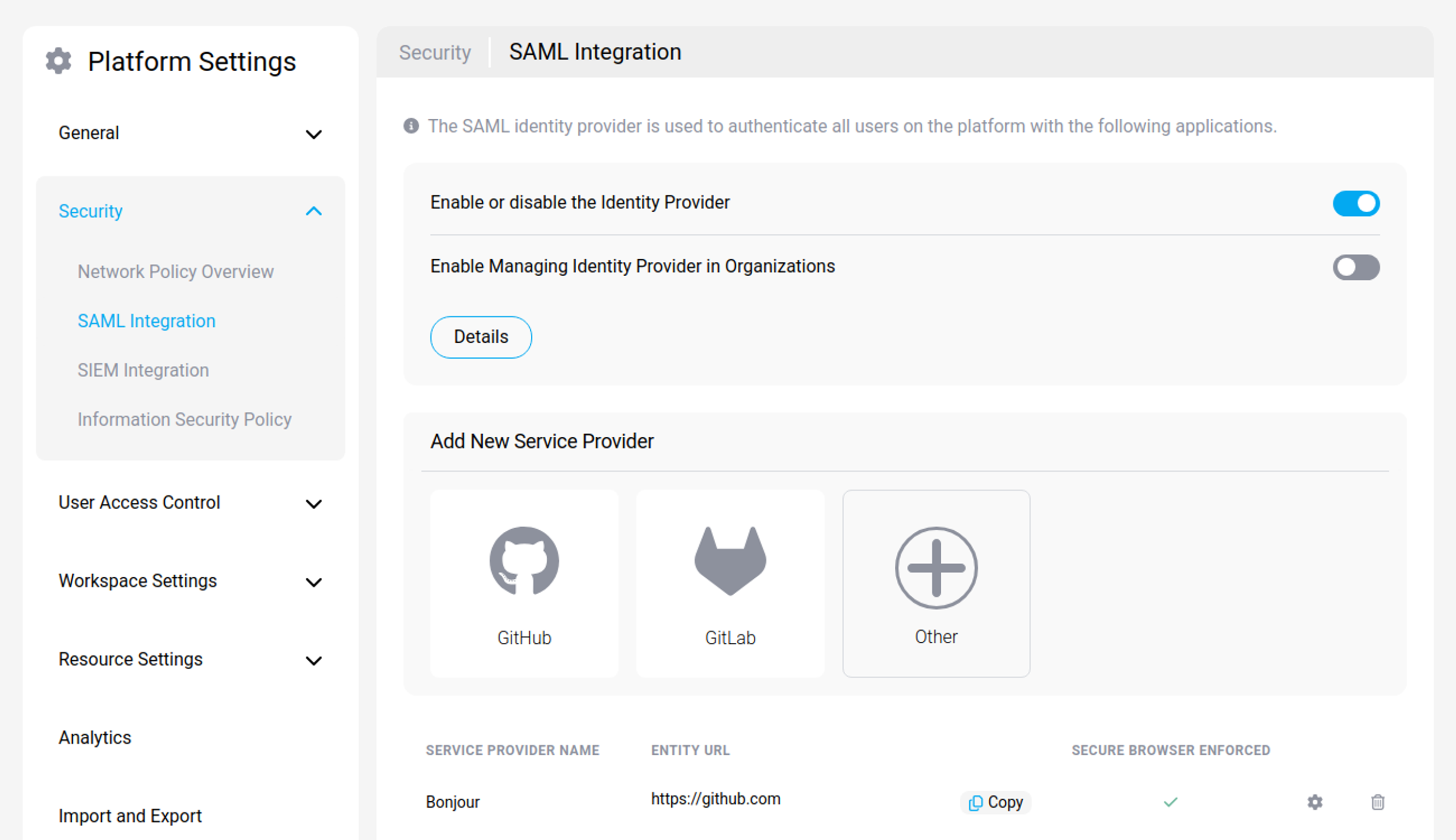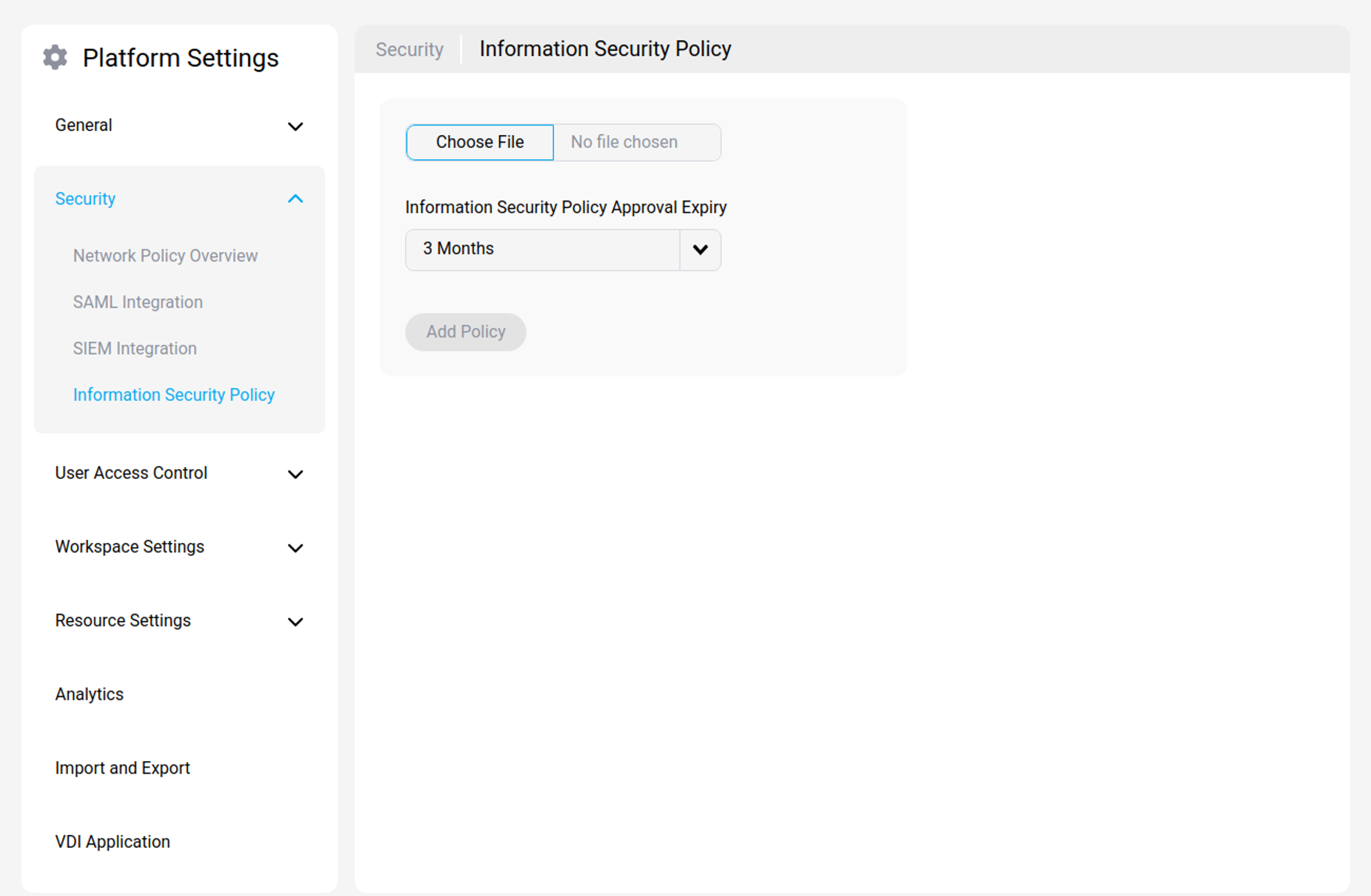Appearance
Security Settings
Configure critical security parameters for the entire platform. This includes managing SAML Integration for secure web application access via RBI, setting up SIEM Integration for centralized logging, getting a Network Policy Overview, and establishing platform-wide Information Security Policy settings. These settings are essential for protecting platform resources and ensuring secure user access.
Network Policy Overview
Get a summary view of the network policies currently applied across the platform. This overview helps administrators quickly understand the existing network security configurations and rules at a high level.
 Network Policy Overview
Network Policy Overview
SAML Integration
The SAML Integration section is responsible for authenticating all users on the platform when accessing web applications. Users access these Web Applications through Remote Browser Isolation (RBI), known on the platform as the "Secure Browser". The Secure Browser offers DLP-enabled access to any sensitive domains, such as GitHub, Jira, and GitLab. Users are restricted to accessing these Web Applications solely through the platform, prohibiting access via external browsers.
Administrators have the option to enable or disable a pre-configured identity provider. They can also allow organizations to oversee their own identity providers.
 SAML Integration Section
SAML Integration Section
SIEM Integration
Configure the integration of the platform with your Security Information and Event Management (SIEM) system. This allows for forwarding logs and security events from the platform to your central SIEM for monitoring, analysis, and alerting.
 SIEM Integration
SIEM Integration
Information Security Policy
Define and manage the information security policies enforced by the platform. This section may include settings related to data handling, access controls, and compliance standards that users and the system must adhere to.
 Information Security Policy
Information Security Policy
